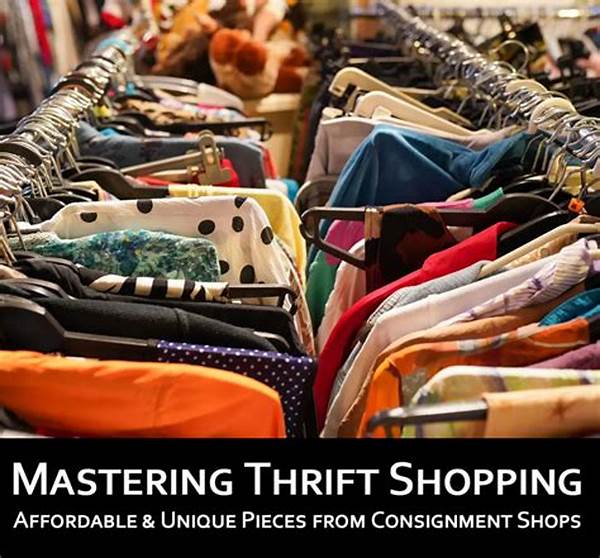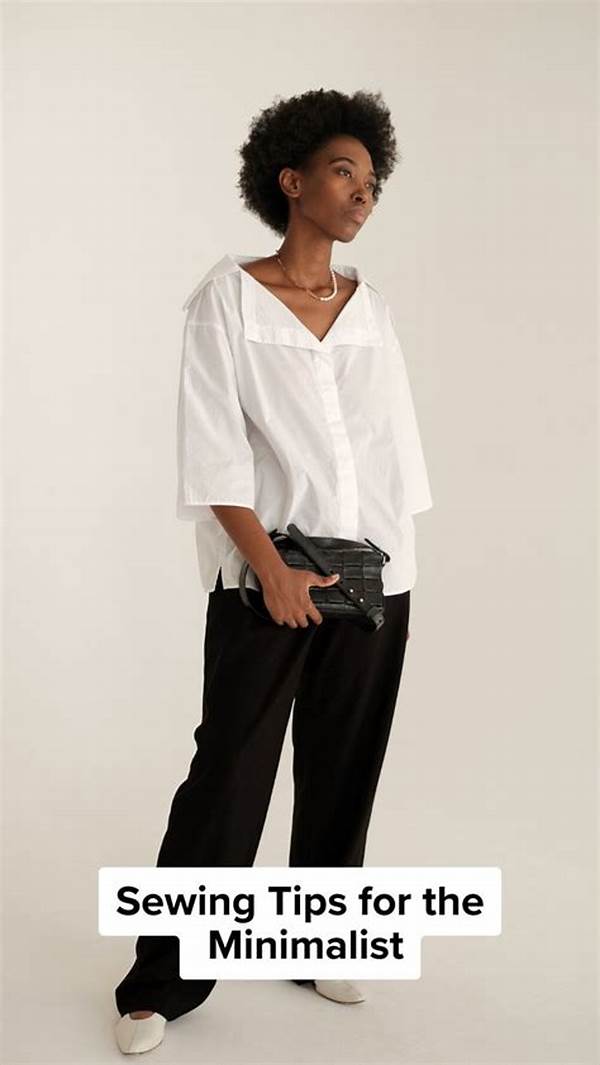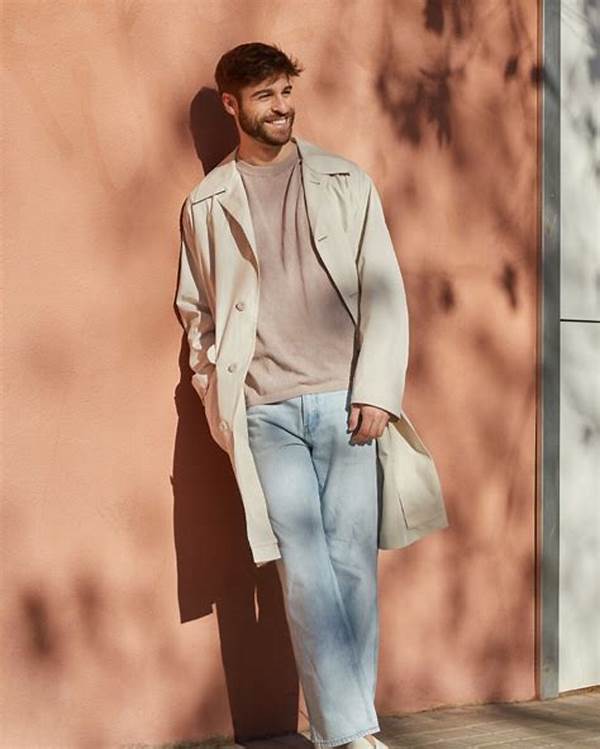In a world where sustainability is becoming the norm, thrift shopping for ethical fashion emerges as not just a trend but a necessity. Imagine being able to indulge in your love for fashion while simultaneously contributing to the preservation of our environment. This is the reality that thrift shopping offers. By opting for pre-loved clothing, you are not only reducing waste but also saying no to the fast-fashion industry, notorious for its exploitative practices and environmental destruction. Every piece you purchase from a thrift shop tells a story, provides a unique style statement, and most importantly, aligns with a conscious lifestyle. So, why not make a difference one garment at a time?
Read Now : Retro Y2k Fashion Comeback
The Appeal of Thrift Shopping
Thrift shopping for ethical fashion is not merely a shopping activity; it is a movement towards a more sustainable and ethical future. With the fashion industry being one of the world’s most polluting sectors, every small change counts. Choosing thrift shopping reduces demand for new clothing production, which often involves harmful environmental and labor practices. Furthermore, thrift stores often support charitable causes, recording a fuller circle of goodwill. Your purchase isn’t just a fashion statement but a statement of values. The choices we make have the power to ripple out and create real change. Isn’t it amazing to think that your wardrobe could speak volumes about your commitment to a better world?
Benefits of Thrift Shopping
1. Environmental Impact: By thrift shopping for ethical fashion, you significantly cut down on waste and reduce the demand for new production, which often harms the environment.
2. Unique Finds: Discover one-of-a-kind pieces that give your wardrobe its own personality, far removed from mass-produced fast fashion.
3. Affordability: Enjoy stylish clothing without breaking the bank; thrift shopping allows you to dress well and responsibly.
4. Support Charities: Many thrift shops donate a portion of their profits to various charitable organizations, meaning your purchases help communities.
5. Reduce Demand: By purchasing second-hand, you indirectly lower the demand for new clothing, which often comes from resources-intensive processes.
Conscious Consumerism
Thrift shopping for ethical fashion promotes conscious consumerism, encouraging individuals to reflect on their purchasing choices. With each thrift store visit, you become part of a larger community prioritizing sustainable living. This approach fosters mindfulness about our purchases and considers the broader impact of our buying decisions. By opting for thrifted clothing, you’re not just wearing something unique and stylish, but you’re also making a statement against environmental degradation and unethical practices. Your shopping habits begin to shift from impulse to intentional. As this conscious approach grows, it can inspire others, cultivating a collective effort toward an ethical and sustainable world.
Read Now : Chic Navy And White Combinations
The Social Responsibility of Fashion
Fashion is not just about appearance; it conveys messages about our worldviews. Thrift shopping for ethical fashion allows us to wear our values proudly. As consumers increasingly yearn for transparency, thrift shopping answers the call by providing a clear alternative to fast fashion. This shift is significant: thrift shopping reduces carbon footprints and supports sustainable practices, ultimately paving the way for more responsible fashion consumption. The underlying message? Our choices matter. By choosing thrift, we’re casting a vote for ethics, sustainability, and change. Imagine a future where ethical fashion is the standard rather than the exception. Your next thrift purchase is a step towards realizing that vision.
Creating a Style Legacy
Every piece of clothing carries a history, and thrift shopping for ethical fashion gives you the chance to be part of that legacy. You have the power to create a unique style narrative that’s not only environmentally conscious but deeply personal. With each thrifted item you acquire, you’re not just adopting a piece of fashion history; you’re curating a future marked by sustainability. The beauty of thrift shopping is its dynamism—each find brings new possibilities, encouraging personal expression while sticking to ethical principles. By embracing thrift fashion, you’re crafting a wardrobe that tells stories of conservation, creativity, and change.
The Economic Advantage
Thrift shopping for ethical fashion also presents economic advantages. As consumers become more aware of the financial benefits of second-hand shopping, thrift stores gain traction. Thrift purchases mean immense savings—a boon for those wanting to limit expenses without sacrificing style. Additionally, this practice encourages a circular economy, where clothing lifecycles extend beyond traditional retailing, effectively conserving resources and promoting long-lasting change. With fashion’s typical price markup out of the equation, thrift shoppers experience a different kind of retail satisfaction rooted in value and ethics. Ultimately, thrift shopping represents a cost-effective solution for would-be fashion aficionados eager to blend classic and contemporary trends.
Summarizing the Movement
In summary, thrift shopping for ethical fashion isn’t just a trend—it’s a meaningful movement toward sustainability and ethical consumerism. It offers an alternative to the environmentally harmful and often exploitative practices of the fast-fashion industry, empowering consumers to make better choices for people and the planet. As thrifting culture gains momentum, consumers’ combined impact amplifies, leading to substantial environmental and social change. With a focus on reducing waste and promoting sustainable practices, thrift shopping emerges as a vital component of a broader ethical discourse. Together, we can create a future where thrift shopping for ethical fashion becomes the prevailing standard, highlighting the power of mindful choices in transforming industries and communities.




